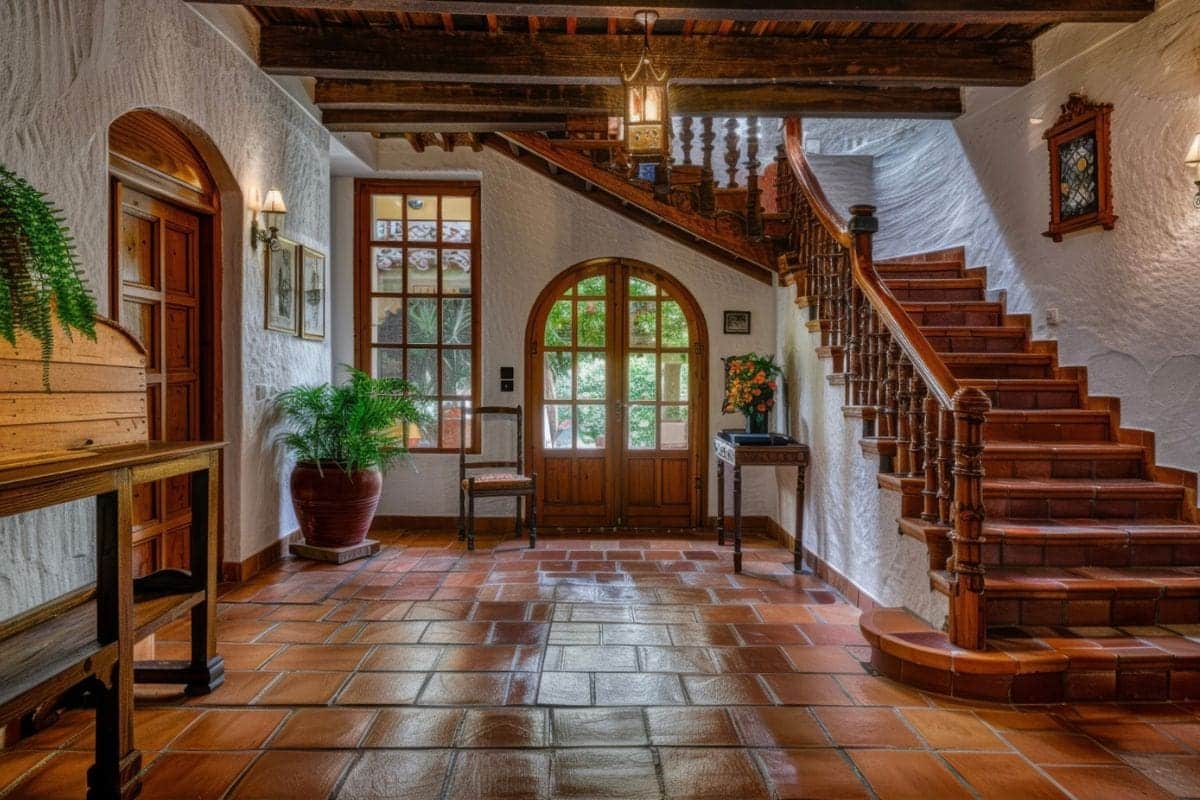Immerse yourself in the warm, vibrant world of Spanish interior design, where every room tells the story of a rich cultural heritage woven through the ages. Spain’s diverse history, from the legacy of the Moorish empire to the stately grandeur of the Renaissance, infuses its modern homes with a unique blend of old-world charm and contemporary flair.
Walk through the virtual doors of this essay to uncover how historical influences have shaped the unmistakable textures, colors, and furnishings that epitomize Spanish style. Prepare to explore an aesthetic deeply rooted in the past yet constantly evolving with modern innovations and sustainable practices that offer a glimpse into the future of design.
Table of Contents
- Historical Influence on Spanish Interior Design
- Critical Elements of Spanish Interior Design
- Modern Innovations and Trends in Spanish Interior Design
- Sustainability and Eco-Friendly Practices in Spanish Interior Design
- Related Content
Historical Influence on Spanish Interior Design
The Colors and Contours of Spain: A Glimpse into the Rich Aesthetic of Spanish Interiors
A sense of warmth envelopes the space when one steps into a Spanish home. It’s like being wrapped in a rich tapestry of history interwoven with modern sophistication. But have you ever wondered how centuries of cultural evolution have influenced the unique aesthetics of Spanish interiors?
Let’s embark on a vivid tour through the corridors of time to unveil the secrets behind Spain’s distinctive design ethos.
The Roots of Richness
Spanish interior design is a palette where history’s brush has painted every hue with purpose. The Moors left behind their intricate arabesques and geometries, embedding the love for decorative tiles that grace many a Spanish wall and floor. Their legacy is visible in the zellige tiles, their colors and patterns speaking the language of ancient artistry.
Beneath the arches of Roman influence, Spanish interiors found their solid foundations. Look at the robust pillars and stucco textures that recall the might of empires long past. The Visigoths, too, left their mark, introducing an affinity for heavy, durable furniture that stands the test of time.
The Canvas of Conquest
Spain’s history of conquests and influences from abroad can be seen like brushstrokes across the canvas of its interiors. The indulgent velvet and brocade fabrics bring forth visions of the Americas, from where wealth and new materials flowed back with explorers of the New World.
From the Old World, the spice of color trickled in through trade routes, weaving saffron yellows, terracotta oranges, and vibrant blues into textiles and ceramic designs. Each color choice in Spanish design is a nod to a historical chapter, a story to be felt and lived.
The Dance of Light and Space
The dance of light plays a pivotal role in crafting the mood of Spanish interiors. Relationship with natural light has always been cherished, allowing rooms to hum with sunbeams during the day and flicker with candlelight by night. High ceilings and large windows collaborate in a pas de deux, creating airy, breathable spaces that echo the open-hearted hospitality of Spain.
A Furnishing Finale
Furniture in Spanish interiors ground the fleeting beauty of these rooms by combining form and function with a dash of rustic charm. These pieces usually boast dark woods and robust ironwork, crafting an aesthetic that is timeless and inviting.
Combining these elements, one finds an inherently Spanish setting that speaks of siestas in cool, shadowed rooms and feasts around tables laden with the fruits of the Mediterranean.
In essence, the unique aesthetics of Spanish interiors are a medley of past and present, functionality and beauty, history and art. It’s a homegrown sanctuary that continues to evolve, just as it has for centuries, inviting each person to appreciate the chapters of history nestled within its walls.
Terracotta tiles underfoot, hand-painted ceramics on the mantle, and the lingering legacy of many cultures in the air are the art of Spanish interior design.
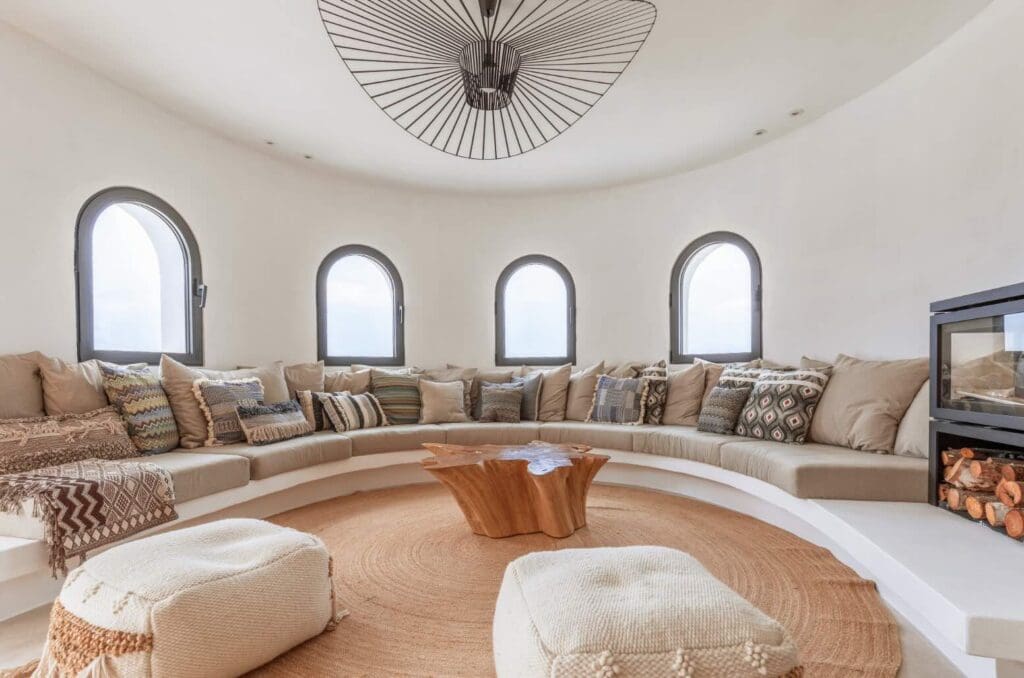
Critical Elements of Spanish Interior Design
Exploring the Vibrant Palette: The Colors that Define Spanish Interiors
As one delves into the heart of Spanish design, it becomes clear that color is not just an accent but a storyteller, striking a chord with all who encounter its vibrant spectrum. Drenched in a palette that echoes the country’s diverse landscapes and spirited traditions, Spanish interiors are a canvas of rich, earthy tones and lively hues that invite warmth and celebration into every space.
The terracotta reds and sunny yellows reflect the baked soil and radiant sun of the Iberian countryside, bringing an organic connection to nature indoors. These earthen shades are a testament to Spanish design’s simplicity and rustic elegance, creating a welcoming and comforting atmosphere.
But it’s not all about the warmth of the Earth in Spanish color schemes. Azure blues and deep greens are reminiscent of the Mediterranean Sea and the verdant valleys of the north, offering a tranquil and refreshing contrast. These cooler tones serve as an invitation to calmness, often featured in decorative elements that capture one’s gaze and soothe the soul.
Contrasting these natural inspirations, Spanish interiors are not shy about embracing bold, dramatic colors. Ruby reds and opulent golds speak of the grandiosity found in Spanish cathedrals and palaces. These regal touches are not reserved for the affluent; they dance through homes in decorative pillows, ceramics, and woven textiles, infusing spaces with a sense of luxury and vitality.
Beyond the colors drawn from Spain’s environment and heritage, there’s a nod to the festivities ingrained in the culture. The famous fiestas and flamenco dances resonate through spirited splashes of pinks, oranges, and purples. These festive colors can transform an ordinary room into a joyous space, mirroring the lively social essence of Spanish life.
Textural elements in Spanish design further accentuate the color story. Plaster walls create a soft backdrop for the rich hues, allowing them to pop and resonate with anyone entering the space. Time-worn patinas add depth and history, as if the walls have stories to share.
In Spanish interiors, color is more than a visual element; it is an emotional response, a narrative thread connecting the past with the present. It’s a celebration of life’s tapestry, reflected in the walls, furniture, and accents that make up the space. The colors selected for a home are not arbitrary; they are carefully chosen notes in a symphony of design that speaks to the soul of Spain.
Indeed, one might find it nearly impossible to separate the pulsating energy of Spanish culture from the colors that adorn its interiors. In every brushstroke and textile, a larger story is being told—a story of a land and people that embrace life with open arms and homes with open doors. One needs only step inside to feel the embrace of colors that have been and will continue to be quintessentially Spanish.
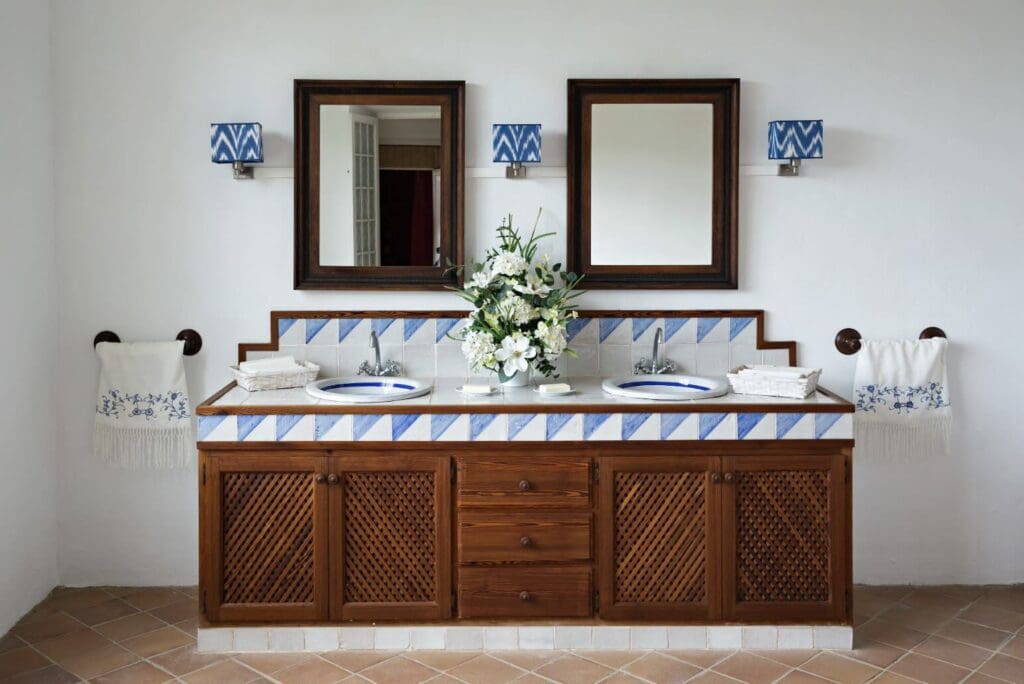
Modern Innovations and Trends in Spanish Interior Design
Unveiling the Contemporary Shifts in Spanish Interior Design
As fans of art and design, we know that Spanish interior design is a rich tapestry woven with threads of history and culture. The narrative is a delightful juxtaposition where ancestral heritage meets modern innovation. Today’s trends continue to transform Spanish interiors, embracing new methods while honoring the soul and essence of its traditional roots.
One of the most noticeable contemporary trends in Spanish design is the minimalistic approach to décor. While historical Spanish interiors are recognized for their opulent and intricate details, the modern movement leans towards simplicity and minimalism. This shift reflects a world where spaces must serve multiple purposes, balancing the hustle of modern life with the calm of a serene home environment.
Sustainability is another trend taking center stage. Environmentally friendly materials, upcycling, and the use of local artisan goods highlight an increased awareness of our ecological footprint. For example, reclaimed wood from Spanish olivewood groves offers a durable and sustainable option that seamlessly blends old-world charm with contemporary consciousness, adding character that tells a story in every grain.
Functional art is a transformative element in today’s Spanish design scene. Sculptural lighting fixtures, artistic rugs, and bespoke pieces of furniture are not merely practical; they are conversation starters, each a testament to creativity and craftsmanship. Local artisans and modern designers work hand-in-hand to create functional pieces that stand independently, linking utility with exceptional visual appeal.
Urban influences with a Spanish twist have recently surged, particularly in city apartments and lofts. Graffiti art, for instance, has transitioned from the streets to the drawing room, lending a dynamic and youthful vibe to interiors. The kinetic patterns and bold graphics make for an exciting layer against the backdrop of Spain’s classical architecture, representing a confluence of the old and the new.
In keeping with the times, technology has woven itself into the fabric of Spanish interior design. Smart homes with automated systems for lighting, climate control, and entertainment now blend seamlessly within the Spanish aesthetic. Technology integration is done thoughtfully to ensure that convenience does not overshadow character.
Lastly, the role of personal storytelling has grown to be an essential aspect of Spanish interior design. Personalization emerges as individuals seek to imprint their identity within their homes. This might be through a curated selection of art, a display of treasured travel souvenirs, or a customized feature wall that showcases personal tastes and experiences.
In essence, contemporary Spanish interior design is an intricate dance between the old and the new, the minimal and the elaborate, the sustainable and the technological. It’s an ongoing adventure that calls to those who appreciate the warmth of tradition and the exhilarating pulse of modernity. As society’s tastes and values evolve, so does the art of creating spaces, ensuring that Spanish interior design remains as vibrant and expressive as a flamenco dancer under the Andalusian sky.
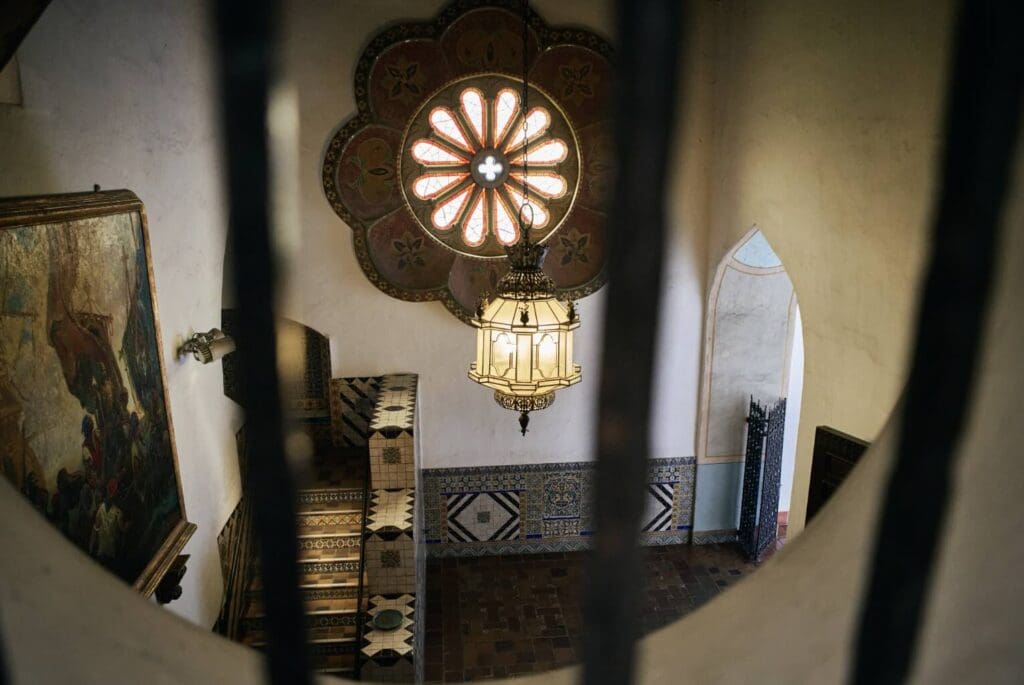
Sustainability and Eco-Friendly Practices in Spanish Interior Design
How Sustainable Living is Being Integrated into Spanish Interior Design
Sustainable living isn’t just a trend; it’s a lifeline for our environment, and creative minds are weaving this essential principle into the vibrant tapestry of Spanish interior design. One of the freshest waves sweeping Spanish homes is using repurposed and reclaimed materials.
Designers are salvaging older materials with a tale to tell, giving them new life as part of modern decor. For example, wooden beams from century-old structures find new purpose as rustic mantels or sturdy table legs, allowing history to resonate within contemporary living spaces.
Additionally, energy efficiency is taking center stage. With a nod to Spaniards’ long-standing respect for natural light, modern designs incorporate advanced technologies like smart thermostats and LED lighting. This brightens the home and lightens the environmental footprint, embracing a harmony between aesthetics and eco-consciousness.
Another eco-sensitive movement is the inclination toward low-VOC (volatile organic compounds) paints and finishes. In Spain, where the walls often speak as loudly as the art they display, non-toxic paints preserve indoor air quality while still showing off the vibrant colors that dance throughout Spanish culture.
The connection with nature is ever-present in Spanish design, but now it goes beyond aesthetics. Incorporating indoor gardens and plant-filled patios brings beauty and improved air quality, creating serene spots for reflection and relaxation. Living walls are turning heads for their lush appeal and ability to purify the air and connect the urban indoors with the natural outdoors.
Even in textiles, Spanish interior design is keen on sustainability. Organic fabrics for curtains, cushions, and rugs are becoming the materials of choice. They are sourced responsibly and often tell a story of local craftsmanship, adding another layer of meaning to the space.
In a harmonious blend, designers skillfully thread the past with the present, infusing Spanish interiors with innovations that recognize the importance of sustainable living. Rather than overwhelming, thoughtful moderation prevails, ensuring spaces feel as good as they look, as mindful as they are magical.
Engaging the senses while caring for the planet, Spain’s interior design narrative continues to unfold with sustainability as its central theme, transforming homes into havens and homages to the Earth that provides for us all.
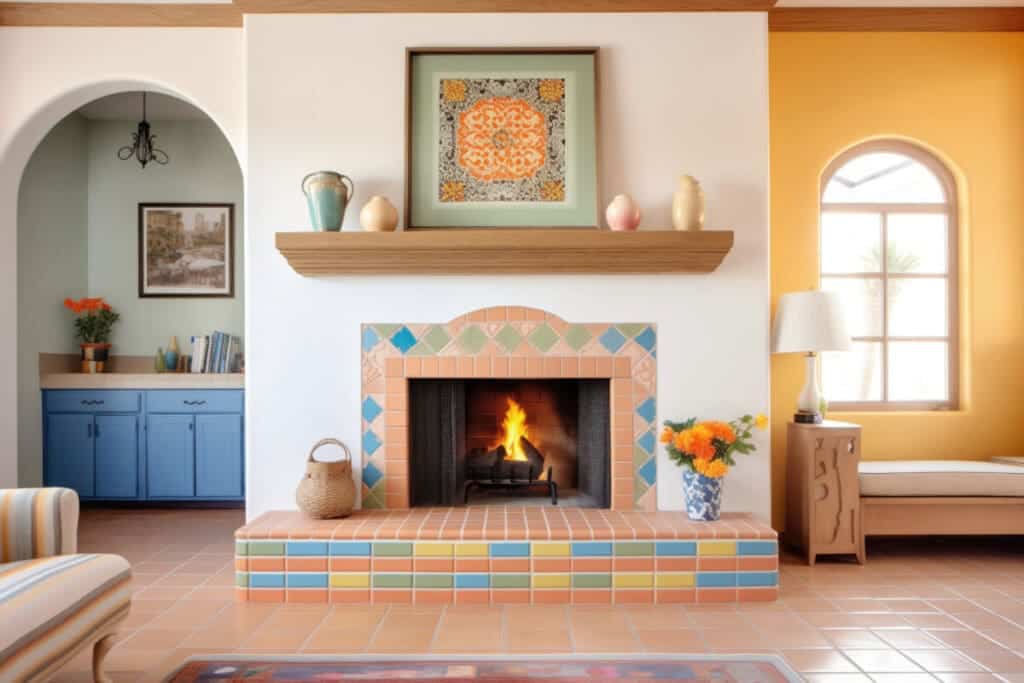
Navigating the colorful corridors of Spanish interior design reveals a world where timeless tradition and modern innovation coexist in harmony.
As we’ve explored the essence of Spain’s design ethos, from the enduring architecture to the dynamic trends reshaping today’s interiors, it’s clear that the heart of Spanish style is its ability to adapt while maintaining a solid connection to its historical roots.
Embracing this Iberian sensibility in your surroundings isn’t just a design choice; it’s an invitation to infuse your space with the soul of Spain, creating a home that’s not only visually stunning but also a testament to sustainable living and cultural reverence.
If you want to manufacture home decor products in Asia, we would love to discuss how Mondoro can help you. We can produce for you a variety of home decor products.
Find out more about how Mondoro can help you create, develop, and manufacture excellent home decor and furniture products – don’t hesitate to contact me, Anita. Check out my email by clicking here or become a part of our community and join our newsletter by clicking here.
Mondoro gives out a FREE Lookbook to anyone interested. You can receive a copy of our latest Lookbook by clicking here.
Listen to our Podcast called Global Trade Gal. You can find it on all major podcast platforms. Try out listening to one of our podcasts by clicking here.
Subscribe to our Mondoro Company Limited YouTube Channel with great videos and information by clicking here.
Related Content
What Is Alabaster? Alabaster For Home Decor Product Development
Production is about manufacturing goods from raw materials to finished products. Productivity is considered part of the production process. Productivity is about how efficient a country or company is. Productivity is an economic principle; a formula is used to calculate productivity.
You can discover more by reading What Is Alabaster? Alabaster For Home Decor Product Development by clicking here.
Natural Agate Stone Beads For Home Decor Products
Agate is a natural rock formation used as a decorative element for centuries. It can be found in many parts of the world, and there are many different kinds and colors of agate stone. In the Asia practice of Feng Shui, it can help us strike a balance in life and for good luck.
By clicking here, you can discover more by reading Natural Agate Stone Beads For Home Decor Products.
What Is The Difference Between Rattan, Wicker, And Cane Furniture?
Rattan is a type of palm or vine that grows in the jungles of Southeast Asia. Rattan refers to a kind of natural material. Wicker is a type of weave using rattan materials. Cane also refers to a type of weave that is usually woven using rattan material.
You can learn more by reading our blog What Is The Difference Between Rattan, Wicker, And Cane Furniture? by clicking here.

